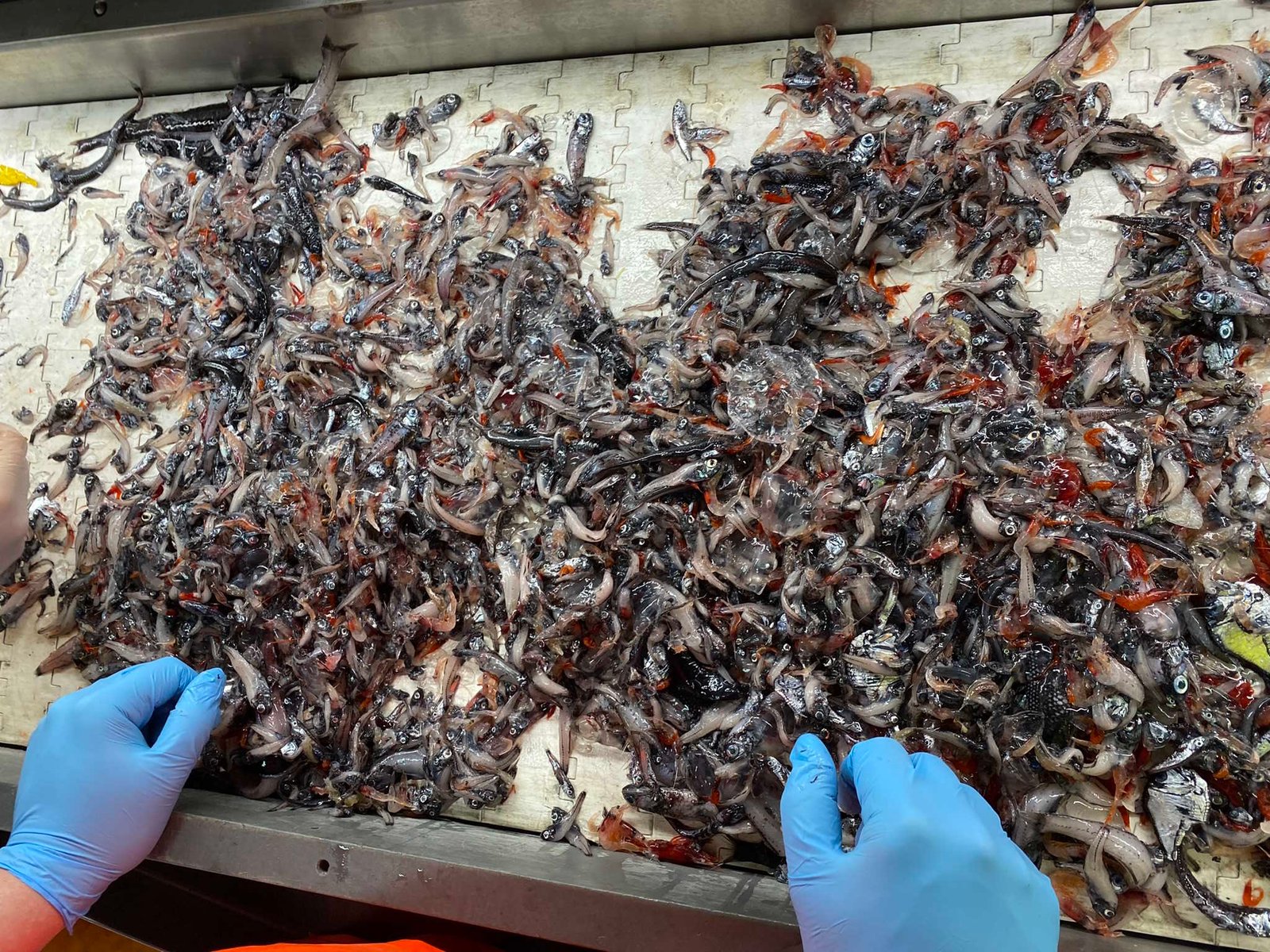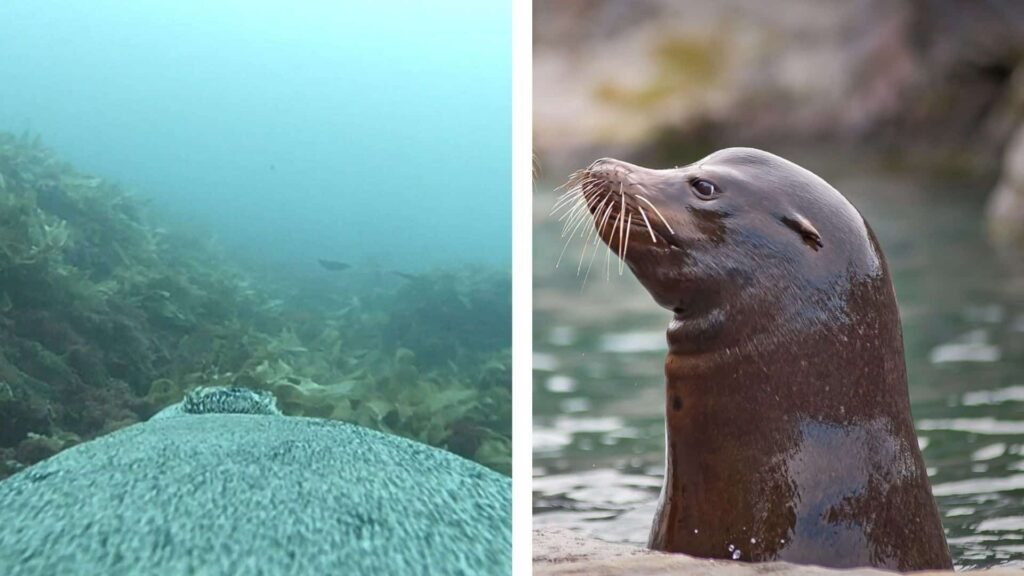It’s easy to forget that beneath the sunlit waves, just past where the ocean’s blue turns to jet-black, lies a world teeming with life—one we barely know. Picture an endless twilight, stretching around the globe, where billions of mysterious fish drift, flicker, and hunt in the cold obscurity. The mesopelagic zone, also called the “twilight zone,” is home to an astonishing array of fish that together may outnumber every other vertebrate on the planet. Yet, their existence is so hidden, so overlooked, that it almost feels like a secret being kept from us. These elusive creatures shape the balance of the oceans, influence the global carbon cycle, and support the entire marine food web, all while living in a world we can barely imagine. Their stories are stranger than fiction—full of glowing lights, nightly migrations, and survival against impossible odds. Let’s plunge into the shadows and discover the mesmerizing, little-known lives of the mesopelagic fish.
The Mysterious Mesopelagic Zone

The mesopelagic zone is often called the twilight zone, stretching from around 200 to 1,000 meters below the ocean’s surface. Sunlight fades and darkness dominates, creating a surreal landscape where only the faintest glimmers penetrate. Here, the pressure is immense, and temperatures drop to near freezing, making it a truly extreme environment. Most people have never seen this part of the ocean, but it covers more area than all the land on Earth combined. The creatures living here have adapted to survive in these challenging conditions, evolving unique features found nowhere else. Imagine swimming through water so dark that your own hand disappears from view—this is daily life for mesopelagic fish.
Billions Hidden Beneath the Waves
It’s almost unbelievable, but scientists estimate that there may be over 10 billion tons of mesopelagic fish in the world’s oceans—more than a thousand times the weight of all humans combined. These fish are so numerous that their nightly migrations create the world’s largest movement of biomass. Some scientists even believe that mesopelagic fish make up the most abundant vertebrate animals on Earth. Despite their numbers, they’re rarely seen by humans, hiding in the inky depths and only coming near the surface under the cover of darkness. Their sheer quantity is a silent force, shaping the entire ecosystem from below.
Masters of Camouflage and Bioluminescence
Living in the dim twilight, mesopelagic fish have developed extraordinary adaptations to avoid predators and find food. Many species possess light-producing organs called photophores, which create mesmerizing patterns along their bodies. This natural glow, known as bioluminescence, acts like an invisibility cloak, breaking up their silhouette and making them nearly invisible from below. Some fish use this light to communicate, attract mates, or even lure prey closer. Camouflage is also key—some have silvery, mirror-like sides that reflect the faintest light, blending perfectly into their surroundings. It’s as if evolution handed them a toolkit for survival in perpetual dusk.
The Nightly Vertical Migration
Imagine if every night, an entire city packed up and moved to a new neighborhood—this is what happens in the mesopelagic zone. As darkness falls, billions of fish travel hundreds of meters up toward the ocean’s surface to feed on plankton and smaller animals. At dawn, they retreat back down to the safety of deeper waters, escaping daytime predators. This incredible journey, called vertical migration, is considered the largest daily migration on the planet. It plays an essential role in moving nutrients and carbon through the ocean, quietly supporting life far beyond their own world. The rhythm of this migration keeps the ocean alive and thriving.
Strange and Wonderful Body Shapes

Mesopelagic fish come in an astonishing variety of shapes and sizes, often looking more like creatures from science fiction than anything familiar. Some, like the hatchetfish, are wafer-thin with enormous eyes designed to spot the faintest glimmer of light. Others, like the bristle mouth, have needle-like teeth and oversized jaws, perfect for snatching prey in the dark. Many species are tiny—some just a few centimeters long—while others, like the lancetfish, can grow to over a meter. Their bodies often appear transparent or silvery, helping them vanish in the murky water. These bizarre adaptations are all about survival in a world without sunlight.
Living Under Pressure
Surviving at depths where the pressure can exceed 100 times that at the surface is no small feat. Mesopelagic fish have evolved flexible bones, specialized proteins, and unique cellular structures to cope with this crushing force. Instead of lungs, they rely on gills to extract oxygen from cold, low-oxygen water. Their muscles and organs are adapted for slow movement, conserving energy in an environment where food can be scarce. For these fish, every aspect of their biology is fine-tuned to withstand the harsh reality of life far below the waves. It’s a delicate balance, perfected over millions of years.
The Invisible Engineers of the Carbon Cycle

The nightly vertical migration of mesopelagic fish isn’t just a spectacle—it’s a crucial part of Earth’s carbon cycle. When these fish feed near the surface and return to the depths, they carry carbon-rich material with them, effectively helping to lock away carbon dioxide in the deep ocean. This process, sometimes called the “biological pump,” helps regulate the planet’s climate and keeps the oceans healthy. Without the hidden work of these fish, the world’s carbon balance could shift, affecting everything from weather patterns to the survival of coral reefs. Their silent labor is a reminder of how interconnected life on Earth truly is.
Feeding the Ocean’s Web
Mesopelagic fish are a vital link in the ocean food web, acting as both predator and prey. They feed on tiny plankton, shrimp, and other small creatures, while also serving as a main food source for larger animals like whales, squid, and seabirds. Even commercial fish like tuna and swordfish depend on them for sustenance. The health of entire marine ecosystems depends on the abundance and survival of these twilight dwellers. When their numbers fluctuate, the ripple effects can be felt throughout the food chain, impacting species both near and far from the mesopelagic zone.
Scientists on the Hunt for Hidden Life

Studying mesopelagic fish is a challenge like no other. Their world is pitch-black, far from the reach of sunlight, and often deeper than most submarines can travel. Scientists use special nets, sonar, and even robotic vehicles to glimpse these elusive creatures. Every new discovery feels like uncovering a secret from another planet. In recent years, researchers have realized that these fish are far more abundant and diverse than anyone guessed. Each expedition into the twilight zone brings new surprises—strange species, unexpected behaviors, and clues about how life endures in the most mysterious corners of Earth.
The Promise—and Peril—of Mesopelagic Fisheries
With growing interest in the vast numbers of mesopelagic fish, some have proposed harvesting them for use as animal feed or even human food. The idea is tempting—billions of tons of untapped protein swimming unseen beneath the waves. But scientists urge caution. These fish play vital roles in the ecosystem, and large-scale fishing could disrupt delicate balances that have existed for millennia. There is much we still don’t understand about their populations, lifecycles, and ecological impact. Rushing in could have consequences we’re not prepared to face, reminding us of the need for respect and restraint when exploring the unknown.
Unlocking the Secrets of the Twilight Zone
Despite their importance, the secret lives of mesopelagic fish remain largely unwritten chapters in the story of our planet. Every year, new technologies reveal more about their behaviors, migrations, and role in the ocean’s grand design. Yet, for every question answered, another emerges from the darkness. These fish embody the wonder and mystery of the deep sea, challenging us to keep exploring and learning. The more we discover, the more we realize how much is left to uncover in the world’s greatest hidden frontier.



